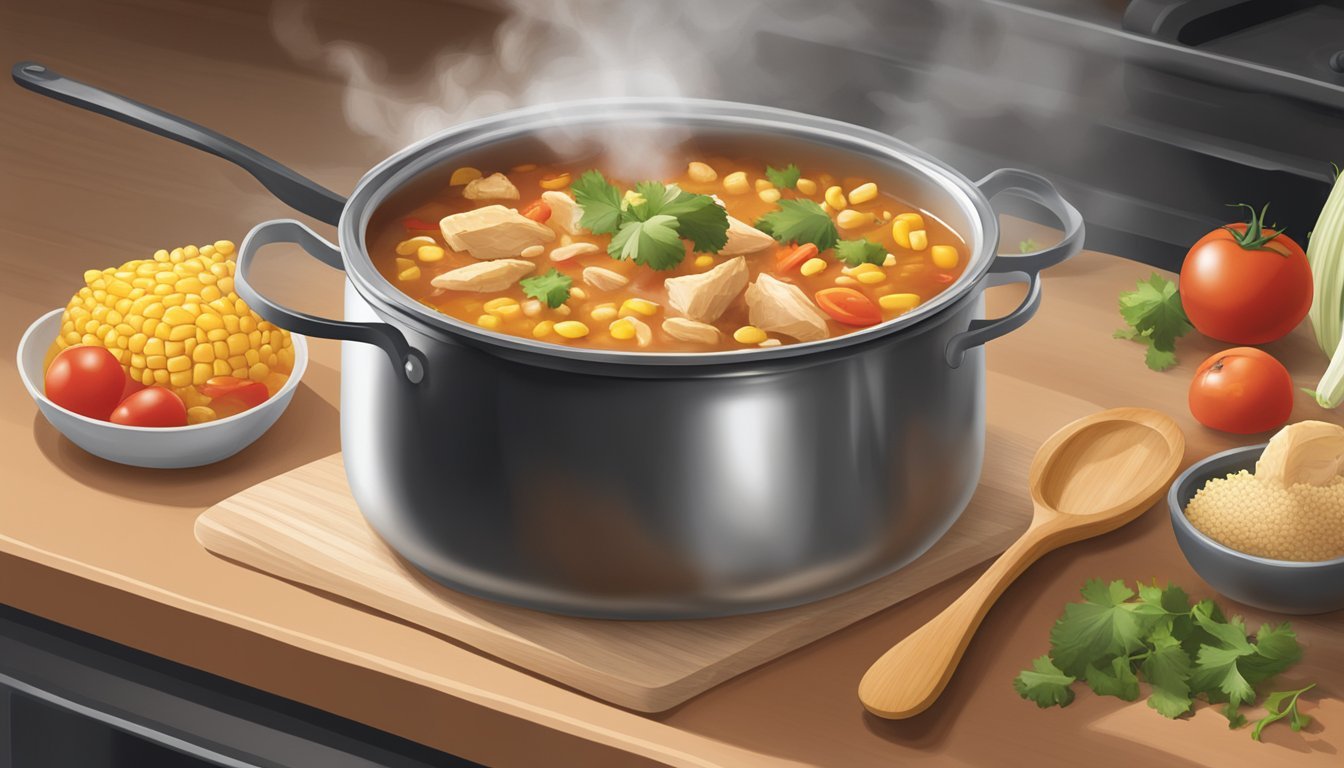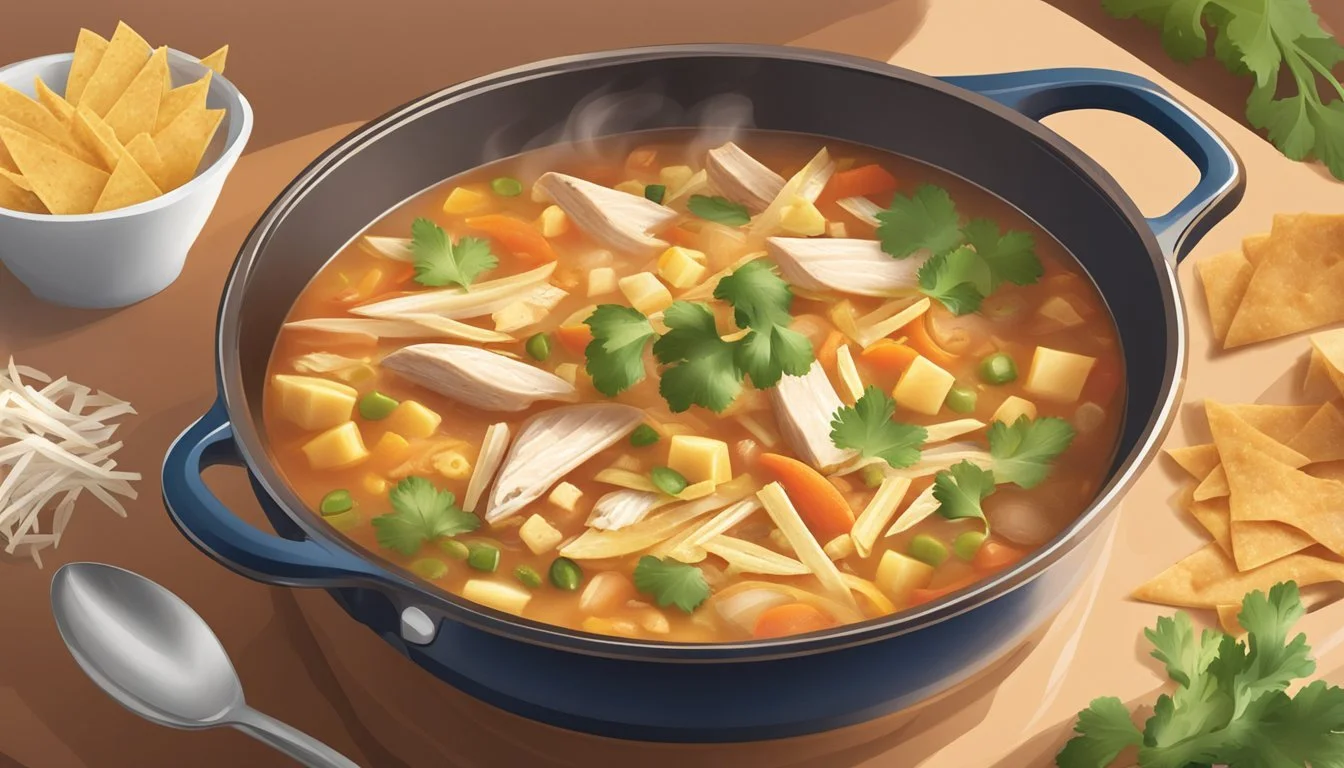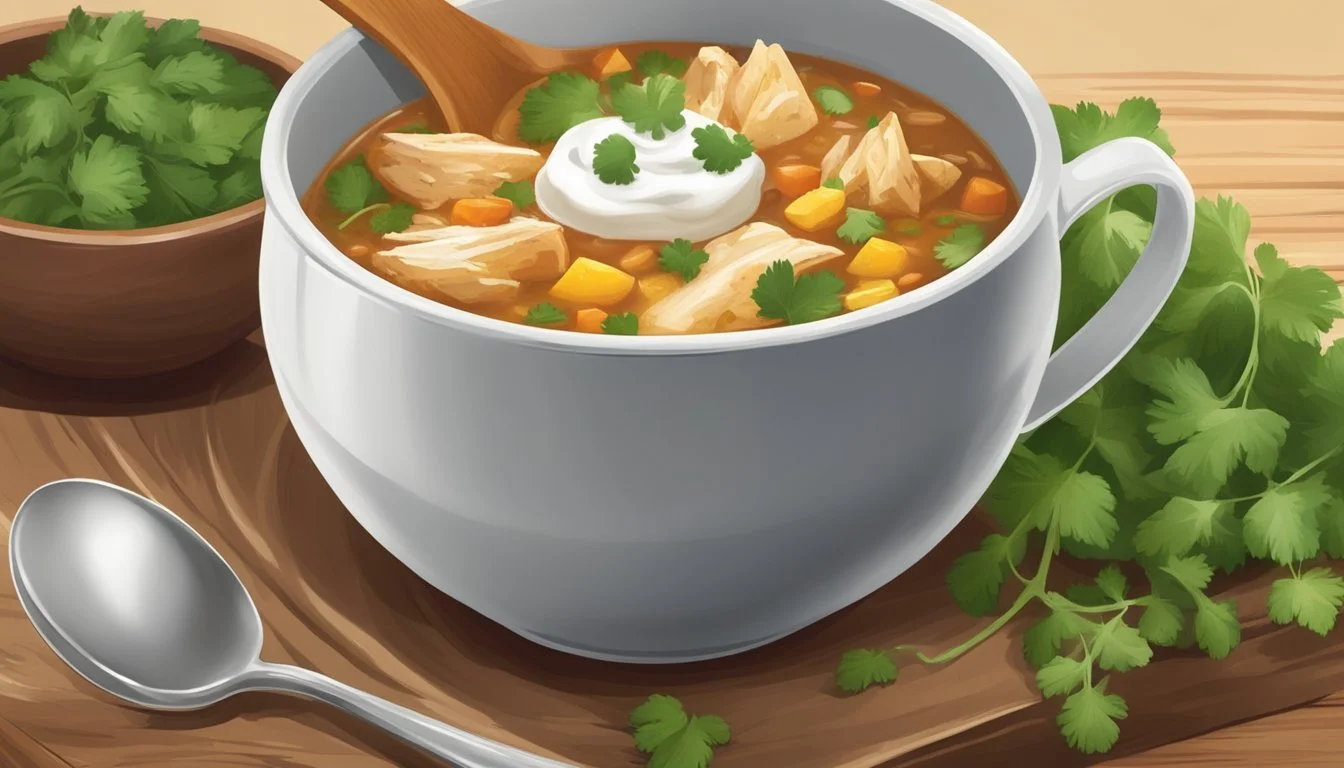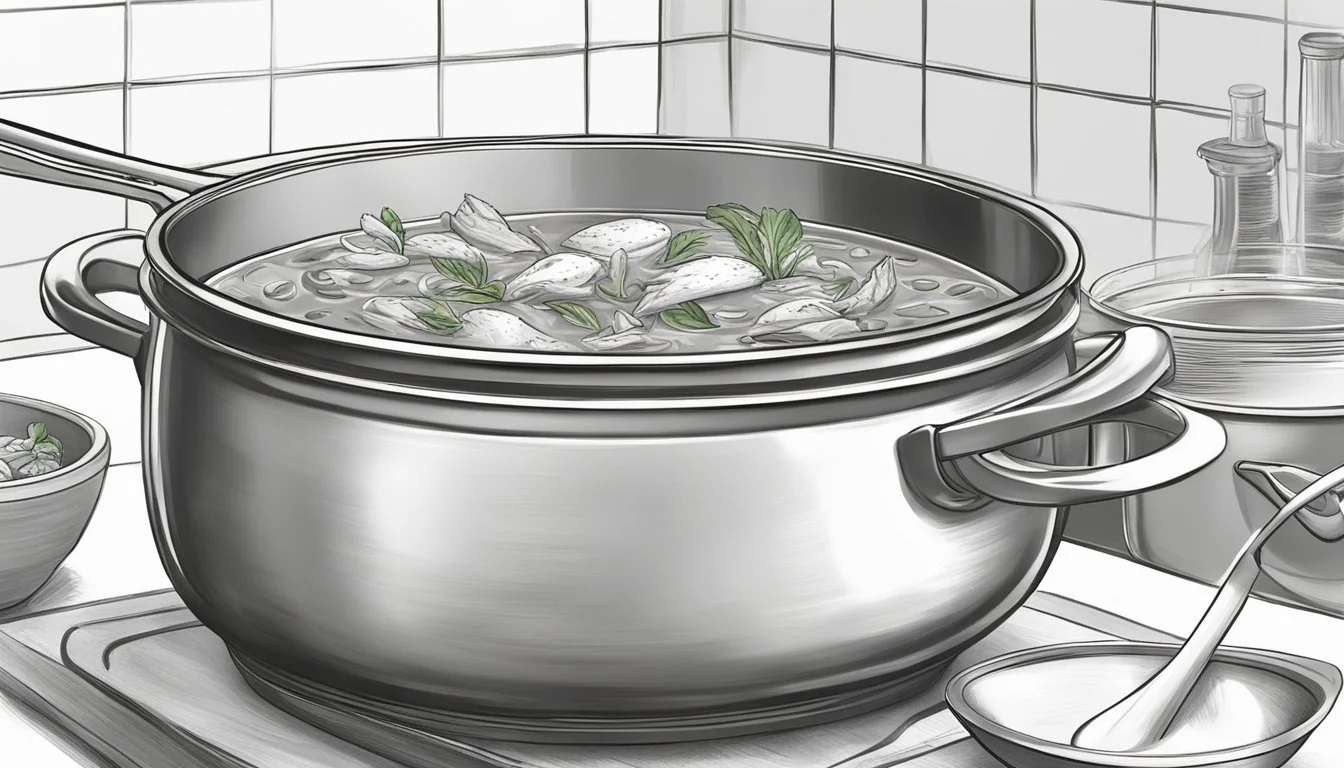Best Way to Reheat Chicken Tortilla Soup
Ensuring Flavor and Texture Retention
Chicken Tortilla Soup epitomizes the perfect symphony of flavors and textures that make for a delicious, comforting meal. It's a hearty dish that brings together tender chicken, robust spices, and a variety of other ingredients to offer a deeply satisfying taste. When it comes to reheating this beloved comfort food, maintaining its rich flavor and the integrity of its chunky ingredients is paramount. Preserving the quality of the soup as if it's freshly made requires a methodical approach that respects the delicate balance of ingredients.
The key to reheating Chicken Tortilla Soup while keeping it flavorful lies in gentle, even warming. Abrupt and high temperatures can compromise the soup's texture and taste, turning tender chicken fibrous and soft vegetables mushy. Instead, the process should focus on a slow and controlled heat application. Methods such as stovetop reheating ensure a steady return to temperature, allowing the individual components to warm through without becoming overcooked.
Moreover, to keep the chunky elements distinct and the soup from becoming too thick or thinned out, a careful monitoring of the reheating process is essential. Stirring occasionally helps distribute the heat evenly and prevents the bottom from scorching. By paying attention to these details, one can preserve the harmonious blend that makes Chicken Tortilla Soup such a flavorful and enjoyable dish.
Understanding Chicken Tortilla Soup
In this section, we explore the fundamental components that make chicken tortilla soup a hearty and comforting dish, highlighting the blend of flavors from key ingredients.
Basics of Chicken Tortilla Soup
Chicken tortilla soup is a traditional Mexican dish known for its rich, spicy broth and variety of textures. It is a filling and nutritious meal that combines protein-rich chicken, fiber-dense beans, and a plethora of vegetables. This soup's defining feature is the crispy tortilla strips added just before serving, which lend a unique and satisfying crunch.
Commonly, the base for this soup is chicken broth, seasoned with spices like cumin and chili powder to give a flavorful kick. Onions, garlic, and jalapeños are sautéed to build a deep, aromatic foundation, while tomatoes contribute a subtle acidity. Corn kernels and black beans are included for their textures and flavors, complementing the chicken perfectly.
Key Ingredients for Flavor
The triumvirate of chicken, cumin, and chili powder forms the flavor backbone of chicken tortilla soup. Chicken provides a rich source of protein and a neutral taste that absorbs the flavors of the broth:
Chicken: Key protein element, usually shredded for easy incorporation.
Cumin: Provides an earthy, warm note to the soup.
Chili Powder: Adds heat and depth, rounding out the spices.
Other ingredients that significantly contribute to the soup's savory profile include:
Black Beans: A staple in Mexican cuisine, black beans add fiber and heartiness.
Cheese: Often sprinkled on top for a melty texture and a hint of creaminess.
Cilantro: Fresh cilantro leaves are used as a garnish, offering a burst of fresh flavor.
Lime: A squeeze of lime juice can brighten the overall taste.
Avocado: Sliced or diced, avocado adds a creamy fat component that contrasts with the spicy elements.
Finally, tortilla strips—either homemade or store-bought—are essential for the authentic touch, while the choice of additional toppings like avocado or cheese allows customization to one's preference.
Pre-Reheating Preparation
Preparing chicken tortilla soup for reheating begins with appropriate storage and thawing practices. These steps are vital for maintaining the soup's flavor and texture. Proper technique will ensure the soup reheats well, keeping it delicious and chunky.
Storage Tips for Chicken Tortilla Soup
To keep chicken tortilla soup fresh and ready for reheating, one should:
Cool the soup quickly to prevent bacterial growth. A quick cool-down process maintains safety and quality.
Use an airtight container to store the soup to preserve its flavor and prevent contamination.
Refrigerate the soup within two hours of cooking. It should be kept chilled if it will be consumed within a few days.
If one intends to store the soup for a longer period, freeze it. Freezing extends the soup's shelf life and retains its quality.
Thawing Frozen Soup Correctly
Thawing chicken tortilla soup is a step that should be approached with care:
Always thaw the soup in the refrigerator for several hours or overnight to ensure even and safe thawing.
Avoid thawing at room temperature as it can lead to the growth of harmful bacteria.
If time is short, one can submerge the airtight container in cold water, changing the water every 30 minutes, which speeds up the process without compromising food safety.
Microwave thawing is possible by using the defrost setting. However, stirring occasionally is recommended to distribute the heat evenly.
Reheating Methods
When reheating chicken tortilla soup, one should consider the method that best preserves its hearty texture and rich flavors. The objective is to warm the soup thoroughly while maintaining the integrity of its ingredients.
Stovetop Reheating Technique
To reheat chicken tortilla soup on the stovetop, place the soup in a pot and warm it over medium heat. Stirring occasionally, bring the soup to a gentle simmer—not a boil. This process should take approximately 10 minutes and is crucial for preventing the ingredients from breaking down.
Microwave Reheating Tips
If time is short, then using the microwave may be suitable for reheating chicken tortilla soup. In a microwave-safe bowl, heat the soup in 1-minute intervals, stirring after each to ensure even warming. This method is quick and easy, but care should be taken not to overheat, as this can adversely affect the soup's texture.
Slow Cooker Warming Instructions
Using a slow cooker can gently reheat chicken tortilla soup without much supervision. Set the cooker to the warm setting and heat the soup for 30 minutes, then check if the desired temperature has been reached. It's a slower method, but it effectively maintains the soup's chunks and flavors.
Oven Reheating Process
To reheat chicken tortilla soup in the oven, place it in an oven-safe dish, covered with a lid or foil, and set the temperature to a low 275°F (135°C). Warming the soup for about 30 minutes or until hot allows for a gentle and even reheating, preserving the texture of the soup.
Each method presents a viable option for reheating chicken tortilla soup, ensuring it remains flavorful and enjoyable.
Preserving Texture and Flavor
Proper reheating techniques for chicken tortilla soup are essential to maintain its rich texture and full-bodied flavor. The right balance of heat and timing can preserve the chunkiness of ingredients and prevent separation, enhancing the soup's overall flavor profile after reheating.
Maintaining Chunkiness
To ensure that ingredients like chicken, beans, and rice maintain their chunkiness, one should reheat the soup gently. Chicken tortilla soup should be reheated on the stovetop over medium heat, with occasional stirring to distribute heat evenly without breaking down the ingredients.
Chicken: Be gentle to keep the pieces intact.
Beans: Heat until just warm to avoid turning mushy.
Rice: Simmer without overcooking to maintain firmness.
Avoiding Soup Separation
The emulsion of fats and liquids in a soup like chicken tortilla can separate when reheated incorrectly. Slow and even heating is key. Using a microwave can often lead to this unwanted separation, so stove top is preferable. A creamy mixture should be added near the end of the reheating process to prevent curdling.
Creamy Elements: Add after the soup is mostly reheated.
Pepper & Spices: Mix in early to heat thoroughly without separation.
Enhancing Flavors After Reheating
Adding fresh toppings and a splash of lime juice can revive the zest and tang in the soup post-reheating. The final touch involves drizzling a bit of olive oil for richness and topping with fresh cilantro to bring back the vibrant flavors.
Toppings: tortilla strips, shredded cheese, and fresh cilantro.
Lime Juice: A squeeze to brighten up the flavors.
Olive Oil: A drizzle to tie the flavors together and add a smooth finish.
Garnishing and Serving
The right garnishes can turn a simple dish of chicken tortilla soup into a visually appealing and taste-bud satisfying meal. Thoughtful serving suggestions ensure that each bowl is not only a treat for the palate but also a balanced meal.
Choosing the Right Toppings
Garnishes should complement both the flavor and texture of the chicken tortilla soup. Crispy tortilla strips or homemade tortilla strips add a delightful crunch contrasting the soup’s hearty base. Shredded cheese, such as pepper jack or cheddar, adds a layer of richness and helps to thicken the soup slightly. Adding diced avocado not only contributes creaminess but also provides healthy fats. A sprinkle of diced tomatoes and frozen corn can add a pop of color and freshness. For heat and spice, jalapenos or a drizzle of hot sauce suit perfectly. Fresh cilantro lends a distinct aroma and freshness, while a dollop of sour cream or cream can balance the soup's spicy elements. If available, guacamole can serve as a creamy and flavorful garnish that pairs well with the soup’s Mexican-inspired flavors.
Serving Suggestions for a Complete Meal
To elevate chicken tortilla soup to a complete meal, one can pair it with a variety of sides. A simple green salad dressed with a citrus vinaigrette provides a refreshing contrast to the soup’s richness. Accompanying the soup with a small serving of Spanish rice or quinoa can make it more filling. For additional protein, serve black or pinto beans on the side, either as a separate dish or mixed into the soup. To stick with a traditional theme, offer warmed cornbread or a slice of crusty bread for dipping. When serving, it’s beneficial to lay out the toppings in separate bowls, allowing diners to customize their own bowls to their liking. This approach not only caters to individual tastes but also makes the dining experience interactive and enjoyable.
Additional Tips and Tricks
When reheating chicken tortilla soup, maintaining its heartiness and robust flavor requires attention to detail. Here are some specific strategies to ensure the soup remains an exceptional comfort food.
Adjusting Soup Thickness
To achieve the desired consistency:
Thicken the soup: If the soup is too thin after reheating, they can thicken it by dissolving a tablespoon of cornstarch in cold water and gradually stirring it into the simmering soup.
Add creaminess: For a richer texture, a splash of heavy cream can be incorporated, stirring well to blend.
Storing Leftovers After Reheating
Proper storage ensures quality for future meals:
Cooling before storage: Leftovers should be allowed to reach room temperature to avoid raising the fridge's internal temperature.
Using airtight containers: An airtight container keeps the soup fresh and prevents moisture loss when storing in the refrigerator.
Meal Prep and Planning
Strategies for incorporating soup into a meal plan:
Prepare components in advance: They can cook proteins or chop vegetables beforehand and store them separately to streamline the reheating process.
Plan portion sizes: They can divide the soup into individual servings before freezing to simplify thawing and reheating later on.
Nutritional Information
Chicken tortilla soup is a melange of nutritious ingredients that contribute to a well-rounded meal. It's important for consumers to understand the health implications and the energy provided by the dish.
Health Benefits of Ingredients
Chicken tortilla soup is often rich in protein from the chicken, which is essential for muscle repair and growth. The soup also typically includes a variety of vegetables like tomatoes and chilies, which offer vitamin C supporting immune function, and vitamin A, important for vision and immune health. Beans in the soup add fiber and protein, which can aid in digestive health and satiety.
Furthermore, the use of whole-grain tortillas contributes fiber which helps maintain stable blood sugar levels and supports heart health. However, it’s important to keep an eye on the sodium content, as canned ingredients can sometimes be high in salt which may affect blood pressure.
Caloric and Macronutrient Breakdown
A typical serving of chicken tortilla soup can vary in its caloric content, but on average, it may contain approximately:
Calories: 200-400 kcal
Protein: 20-30g
Carbohydrates: 20-40g
Dietary Fiber: 4-6g
Sugars: 2-5g
Fats: 5-15g
Saturated Fat: 1-3g
Cholesterol: 30-60mg
Sodium: 400-800mg
Potassium: 300-500mg
Calcium: 5-10% DV
Iron: 10-20% DV
These numbers should be used as a guide, as the exact values can vary based on the recipe and portion size. It is important to consider these nutrition facts in the context of an individual's dietary needs and daily calorie goals.
Conclusion
Reheating chicken tortilla soup requires careful attention to preserve its rich flavors and textures. Whether it is a homemade batch or store-bought, this comfort food is both delicious and nutritious. Maintaining the chunkiness and preventing the soup from becoming overly soft is crucial.
For individuals seeking a quick and easy meal, microwaving the soup in intervals and stirring periodically can ensure an evenly warmed dish. In contrast, the oven approach is ideal for gently reheating larger quantities without compromising the quality. Covering the dish with aluminum foil helps in retaining moisture, ensuring that the soup remains savory and delicious.
Meal prep enthusiasts will find that chicken tortilla soup stores well. It can last 3-4 days in the refrigerator when kept in an airtight container. For those with foresight, thawing frozen soup in the fridge overnight streamlines the reheating process. Slowly warming the soup on medium heat provides a consistently warm and hearty meal, perfect for enjoying the homemade essence.
In short, whether relishing a homemade brew or enhancing a store-bought variety, following these reheating techniques guarantees that chicken tortilla soup will remain a go-to for a comforting and hassle-free feast.







